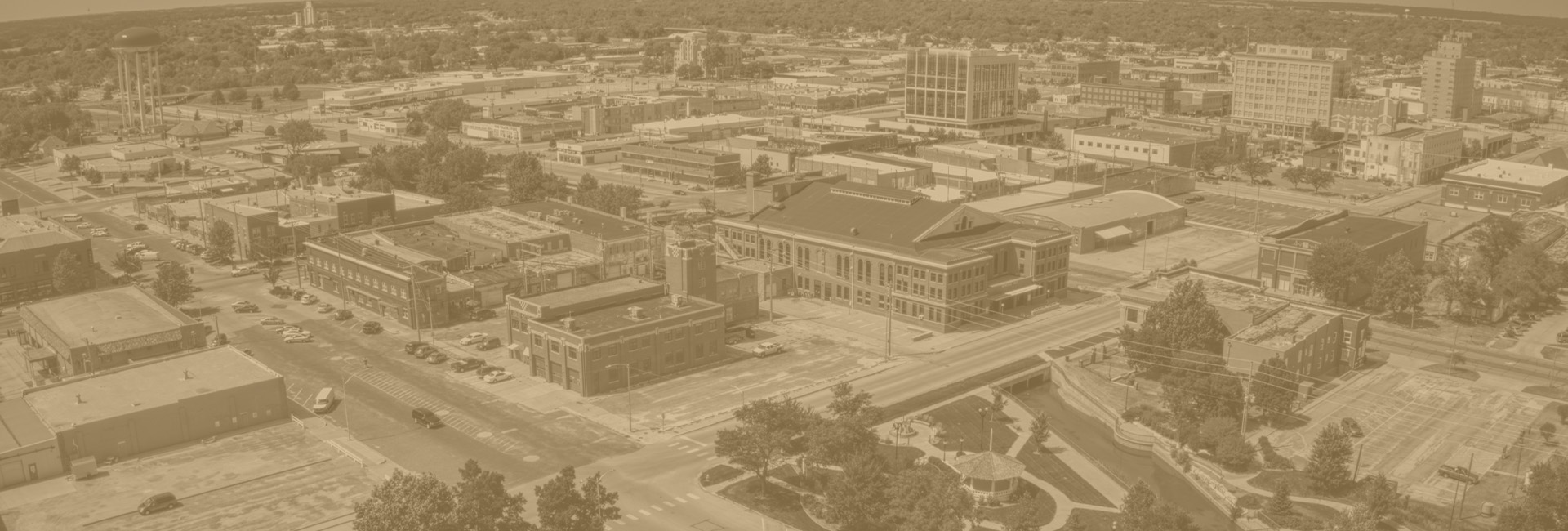If you’ve ever found yourself at a four-way stop, you know how quickly the situation can become confusing. Who should go first? When is it safe to proceed? These questions can leave even the most experienced drivers scratching their heads. At Melinda Young Law Firm, we understand the importance of clarity on the road. Let’s delve into the rules of a four-way stop and shed light on who truly has the right of way.

Clarifying the Basics
At its core, the rule of a four-way stop is simple: the first vehicle to arrive at the intersection has the right of way — the complications arise when multiple vehicles arrive simultaneously. Unlike the commonly held belief that the right of way goes to the vehicle on the right, the actual rule states that the first vehicle to come to a complete stop gets to proceed first.
Understanding Complex Scenarios
While the basic rule seems straightforward, certain scenarios can muddy the waters. For instance, if two vehicles arrive at the intersection at the same time but are traveling in opposite directions, both can proceed simultaneously. Conversely, if they are traveling in the same direction, the vehicle on the right still has the right of way.
Additionally, when one vehicle intends to make a right turn and the other a left turn, the vehicle making the right turn generally has priority. If both vehicles are signaling to turn right, the vehicle on the right can proceed first. Similarly, if one vehicle is signaling a right turn and the other isn’t signaling at all, the vehicle traveling straight retains the right of way. Left turns, however, are typically simpler to navigate, as both vehicles can usually proceed simultaneously.
Handling Ambiguous Situations
Despite these rules, ambiguous situations can still arise, especially when multiple vehicles arrive at the intersection simultaneously. In such cases, it’s essential to rely on communication and visual cues. Making eye contact with other drivers can help establish who intends to proceed first. While traditionally, a more assertive driver might take the lead, it’s crucial to exercise caution and patience to avoid accidents.
Dealing with Four-Way Stop Accidents
Even with a clear understanding of right of way rules, accidents can still occur at four-way stops. If you find yourself in such a situation, Melinda Young Law Firm is here to assist you. Our experienced attorneys can conduct a thorough investigation to determine liability and assess your legal options.
Melinda is an asset to the city of Hutchinson and its legal community. I know she treats her clients with compassion and professionalism. It's a privilege to provide her an endorsement.
Ethan
![]()
Nicholas
![]()
Gabriel
![]()
Additional Considerations for Four-Way Stops
While the basic rules outlined above serve as a foundation for navigating four-way stops, there are additional considerations that can enhance safety and efficiency. For instance, it’s important to approach intersections at an appropriate speed, allowing ample time to come to a complete stop if necessary. Rushing through intersections can increase the risk of accidents and confusion among drivers.
Pedestrian Right of Way
In addition to vehicles, pedestrians also have the right of way at four-way stops. Drivers must yield to pedestrians crossing the intersection, whether they are using a crosswalk or not. It’s essential to remain vigilant and watch for pedestrians, especially in busy urban areas where foot traffic is common.
Understanding Traffic Signs and Signals
While four-way stops rely on the basic principle of right of way, some intersections may be controlled by traffic signs or signals. These signals may override the traditional rules of a four-way stop, dictating when each direction of traffic can proceed. It’s important for drivers to pay attention to these signals and follow their instructions accordingly.
Maintaining Courtesy and Patience
Patience and courtesy are essential virtues when navigating four-way stops. Aggressive or impatient driving behavior can lead to confusion and accidents. Remember to yield to other drivers when appropriate and communicate your intentions clearly using turn signals and hand gestures.
Adapting to Different Road Conditions
The rules of a four-way stop apply regardless of road conditions, but drivers must adapt their behavior accordingly. In adverse weather conditions such as rain, snow, or ice, it may take longer to come to a complete stop. Drivers should exercise caution and increase their following distance to account for reduced traction.
Value of a Car Accident Case Choosing a Car Accident AttorneyRelated Videos
Educating New Drivers
For new drivers, understanding the rules of a four-way stop can be particularly challenging. It’s essential for driver education programs to provide comprehensive instruction on right of way rules and how to navigate intersections safely. Parents and guardians can also reinforce these lessons by practicing with novice drivers in various traffic scenarios.
Legal Implications of Four-Way Stop Accidents
In the event of a four-way stop accident, determining liability can be complex. Factors such as driver negligence, failure to yield, and road conditions may all contribute to the cause of the accident. Legal representation from a qualified attorney can help protect your rights and pursue compensation for damages.
Frequently Asked Questions
How does road infrastructure impact right of way at four-way stops?
Road infrastructure, including signage, road markings, and the layout of intersections, plays a significant role in determining right of way at four-way stops. Clear and visible signage can help drivers understand when to yield and when to proceed, reducing confusion and the likelihood of accidents. Additionally, well-designed intersections with proper lane markings can facilitate smooth traffic flow and minimize the potential for misunderstandings among drivers. However, inadequate or poorly maintained infrastructure can contribute to confusion and increase the risk of collisions. Advocating for improved road infrastructure is essential for enhancing safety at intersections and promoting efficient traffic management.
What are the legal consequences of failing to yield at a four-way stop?
Failing to yield at a four-way stop can have serious legal consequences, including citations, fines, and potential civil liability for damages resulting from accidents. In many jurisdictions, disobeying traffic control devices, such as stop signs, is considered a traffic violation punishable by fines and points on your driving record. Moreover, if a driver’s failure to yield leads to a collision, they may be held liable for any injuries or property damage caused to other parties involved. Seeking legal guidance from an experienced attorney can help individuals understand their rights and options if they are cited for failing to yield or are involved in an accident at a four-way stop.
How can drivers effectively communicate with each other at four-way stops?
Effective communication is essential for navigating four-way stops safely and efficiently. Drivers can use turn signals, hand gestures, and eye contact to convey their intentions and coordinate movements with other vehicles. For example, signaling your intention to turn well in advance can alert other drivers to your planned maneuver, allowing them to adjust their actions accordingly. Making eye contact with other drivers can help establish visual cues and ensure mutual understanding of who has the right of way. By practicing attentive and considerate driving behavior, motorists can minimize confusion and promote smoother traffic flow at intersections.
What role does driver awareness and attentiveness play in preventing accidents at four-way stops?
Driver awareness and attentiveness are critical factors in preventing accidents at four-way stops. By staying vigilant and actively scanning the intersection for other vehicles, pedestrians, and potential hazards, drivers can react promptly to changing traffic conditions and avoid collisions. Distractions such as using a mobile phone, adjusting the radio, or engaging in conversation with passengers can impair a driver’s ability to perceive and respond to hazards effectively. Maintaining focus on the task of driving and avoiding distractions are essential for ensuring safety at four-way stops and throughout the entire journey.
How can municipalities improve safety at four-way stops through traffic engineering measures?
Municipalities can enhance safety at four-way stops through various traffic engineering measures designed to optimize intersection design and traffic flow. This may include installing additional signage to clarify right of way rules, implementing traffic calming measures such as speed bumps or raised crosswalks to encourage compliance with stop signs, and optimizing signal timing to reduce congestion and improve efficiency. Furthermore, conducting regular safety assessments and addressing any identified deficiencies in road design or infrastructure can help prevent accidents and enhance overall road safety. Collaborating with traffic engineers and urban planners can enable municipalities to implement evidence-based strategies that promote safer interactions at four-way stops and other intersections.
Advocating for Safe Driving Practices
At Melinda Young Law Firm, we are committed to promoting safe driving practices and reducing the number of accidents on our roads. By raising awareness of right of way rules and providing legal assistance to accident victims, we aim to create safer communities for everyone.
If you have been involved in a four-way stop accident, don’t hesitate to seek legal guidance from our experienced team at Melinda Young Law Firm. We offer personalized attention and dedicated advocacy to help you navigate the complexities of the legal system and achieve a favorable outcome.

